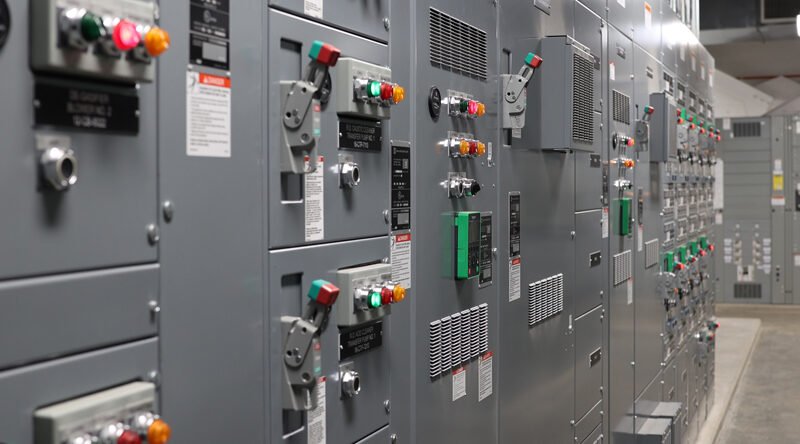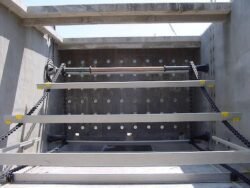
How Much Electricity Does A Wastewater Treatment Plant Use

How Much Electricity Does a Wastewater Treatment Plant Use?
Introduction
Water is an indispensable resource, and efficient wastewater treatment is critical for maintaining public health and environmental integrity. Wastewater treatment plants (WWTPs) are essential facilities designed to manage and treat sewage and industrial wastewater before it is discharged back into the environment. However, these plants demand a significant amount of energy to operate efficiently. In this comprehensive analysis, we will delve into the electricity consumption of wastewater treatment plants, factors affecting energy usage, and strategies for optimizing energy efficiency in these vital facilities.
Understanding Wastewater Treatment
Before diving into the specifics of energy consumption, it’s beneficial to understand the essential processes involved in wastewater treatment. Generally, WWTPs employ multiple stages of treatment: preliminary, primary, secondary, and sometimes tertiary treatment.
-
- Preliminary Treatment:
-
- Involves screening and grit removal.
-
- Removes large objects and coarse particles.
-
- Preliminary Treatment:
-
- Primary Treatment:
-
- Sedimentation tanks are used to settle out solids.
-
- Removes approximately 50-60% of suspended solids.
-
- Primary Treatment:
-
- Secondary Treatment:
-
- Biological processes (activated sludge, trickling filters) break down organic matter.
-
- Removes around 85-95% of remaining organic material and suspended solids.
-
- Secondary Treatment:
-
- Tertiary Treatment:
-
- Advanced processes for further purification (e.g., filtration, UV disinfection).
-
- Achieves higher levels of pollutant removal for sensitive environments.
-
- Tertiary Treatment:
Each of these stages necessitates various mechanical and biological processes, all of which consume electricity to function.
Major Energy Consumers in WWTPs
Energy consumption in wastewater treatment plants can be broadly divided into several key categories:
-
- Aeration Systems:
-
- Aeration is often the most energy-intensive component.
-
- Typically represents 40-60% of total energy use.
-
- Aeration Systems:
-
- Pumping Systems:
-
- Utilized for transporting wastewater through various stages of treatment.
-
- High-efficiency pumps can mitigate energy use, but older models can be substantial energy consumers.
-
- Accounts for around 20-30% of the energy budget.
-
- Pumping Systems:
-
- Solids Handling:
-
- Involves the treatment and disposal of sludge.
-
- Constitutes about 15-20% of the energy usage.
-
- Solids Handling:
-
- Lighting and HVAC:
-
- Ensures the proper working environment and operational safety.
-
- Though often overlooked, can represent 5-10% of the total energy consumed.
-
- Lighting and HVAC:
-
- Miscellaneous Operations:
-
- Includes laboratory operations, administrative tasks, and other ancillary activities.
-
- These generally account for a smaller percentage of the overall energy use.
-
- Miscellaneous Operations:
Quantifying Energy Consumption
The actual amount of electricity consumed by a WWTP is contingent on several variables, including the plant’s size, the volume of wastewater processed, the treatment technology used, and the efficiency of the equipment. We can categorize WWTPs based on their capacities:
-
- Small Plants (serving less than 10,000 people):
-
- Typically consume around 0.5-1.5 kWh per cubic meter of treated wastewater.
-
- Small Plants (serving less than 10,000 people):
-
- Medium Plants (serving between 10,000 to 100,000 people):
-
- Use approximately 0.4-1.0 kWh per cubic meter.
-
- Medium Plants (serving between 10,000 to 100,000 people):
-
- Large Plants (serving more than 100,000 people):
-
- Generally consume around 0.3-0.8 kWh per cubic meter.
-
- Large Plants (serving more than 100,000 people):
To better understand the energy usage, let’s consider a medium-sized plant treating 50,000 cubic meters of wastewater per day:
-
- Daily electricity consumption: 50,000 m³/day * 0.6 kWh/m³ = 30,000 kWh/day
-
- Annual electricity consumption: 30,000 kWh/day * 365 days/year = 10,950,000 kWh/year
Comparing this consumption to residential electricity use, this amount of energy could power approximately 1,000 average homes in the United States for a year, assuming an average usage of 10,900 kWh per household annually.
Factors Influencing Energy Consumption
Several key factors can influence the energy consumption of a wastewater treatment plant:
-
- Influent Characteristics:
-
- The quality and composition of incoming wastewater significantly impact energy needs.
-
- Higher organic load or nutrient concentrations require more intensive aeration and treatment, increasing energy consumption.
-
- Influent Characteristics:
-
- Treatment Technology:
-
- Different treatment technologies have varying energy demands.
-
- Membrane bioreactors (MBRs) and activated sludge processes require more energy than lagoons or trickling filters.
-
- Treatment Technology:
-
- Plant Design and Age:
-
- Modern plants with energy-efficient designs and newer equipment consume less energy.
-
- Older plants often lack energy-saving features and require upgrades to improve efficiency.
-
- Plant Design and Age:
-
- Operational Practices:
-
- The efficiency of plant operations, including maintenance and optimization practices, affects energy use.
-
- Skilled operators can manage processes more effectively, reducing unnecessary energy expenditure.
-
- Operational Practices:
-
- Climate and Geography:
-
- Local climate and weather conditions play a role as temperature and humidity levels impact biological processes.
-
- Plants in colder regions may require more energy for heating and maintaining optimal conditions.
-
- Climate and Geography:
-
- Regulatory Requirements:
-
- Stringent effluent quality standards necessitate higher levels of treatment, correlating to increased energy use.
-
- Compliance with stricter regulations can drive up operational energy demands.
-
- Regulatory Requirements:
Strategies for Reducing Energy Consumption
Given the significant energy consumption of WWTPs, implementing strategies to enhance energy efficiency is crucial. Here are some proven strategies and technologies:
-
- Optimizing Aeration Systems:
-
- Use of advanced control systems like Supervisory Control and Data Acquisition (SCADA) to monitor and regulate oxygen levels in real-time.
-
- High-efficiency blowers and fine-bubble diffusers can significantly reduce energy use in aeration.
-
- Optimizing Aeration Systems:
-
- Energy-Efficient Pumping:
-
- Variable Frequency Drives (VFDs) on pumps can adjust pumping rates based on real-time needs, enhancing energy efficiency.
-
- Regular maintenance and timely replacement of outdated pumps improve performance and reduce consumption.
-
- Energy-Efficient Pumping:
-
- Enhanced Solids Handling:
-
- Employing anaerobic digestion for sludge can generate biogas, which can be utilized for energy production on-site.
-
- Optimization of the dewatering process reduces the volume of sludge, decreasing energy required for treatment and disposal.
-
- Enhanced Solids Handling:
-
- Heat Recovery Systems:
-
- Integration of heat recovery systems to capture and reuse heat from various treatment processes.
-
- Utilizing heat exchangers in anaerobic digesters to improve energy balance.
-
- Heat Recovery Systems:
-
- Lighting and HVAC Improvements:
-
- Transition to energy-efficient LED lighting and smart lighting controls reduces electricity use significantly.
-
- Implementing energy-efficient HVAC systems with proper insulation of plant buildings.
-
- Lighting and HVAC Improvements:
-
- Renewable Energy Integration:
-
- Installation of solar panels or wind turbines on-site can supplement energy needs, reducing dependence on the grid.
-
- Utilization of biogas for combined heat and power (CHP) systems to generate electricity and heat.
-
- Renewable Energy Integration:
-
- Advanced Treatment Technologies:
-
- Adoption of energy-efficient technologies such as aerobic granular sludge systems or membrane aerated biofilm reactors (MABRs).
-
- Implementation of real-time monitoring and control systems to optimize treatment processes.
-
- Advanced Treatment Technologies:
-
- Water Reuse and Resource Recovery:
-
- Developing strategies for water reuse and nutrient recovery reduces the overall volume of wastewater requiring treatment.
-
- Water Reuse and Resource Recovery:
Case Studies
To illustrate the practical application of these strategies, let’s explore a few case studies of WWTPs that have successfully enhanced their energy efficiency:
-
- Gresham WWTP, Gresham, Oregon:
-
- Implemented a comprehensive energy management plan that included the installation of a cogeneration facility using biogas from anaerobic digestion.
-
- Installed solar panels and optimized aeration systems, achieving a net-zero energy status and reducing energy costs by over $200,000 annually.
-
- Gresham WWTP, Gresham, Oregon:
-
- Oxford WWTP, Oxford, Michigan:
-
- Upgraded aeration blowers to high-efficiency models and installed VFDs on major pumps.
-
- Integrated SCADA systems for better process control, resulting in a 25% reduction in energy consumption over five years.
-
- Oxford WWTP, Oxford, Michigan:
-
- Gainesville Regional Utilities RRWWTP, Gainesville, Florida:
-
- Implemented a heat recovery system in anaerobic digesters and transitioned to energy-efficient HVAC systems.
-
- Achieved a 20% reduction in electricity use, saving approximately $150,000 annually in energy costs.
-
- Gainesville Regional Utilities RRWWTP, Gainesville, Florida:
Future Trends and Innovations
The focus on energy efficiency and sustainability in WWTPs is driving innovation in the sector. Several promising trends and emerging technologies are poised to further enhance energy performance:
-
- Artificial Intelligence and Machine Learning:
-
- Leveraging AI and machine learning for predictive maintenance and process optimization to reduce energy consumption.
-
- Real-time data analytics to identify inefficiencies and propose corrective actions.
-
- Artificial Intelligence and Machine Learning:
-
- Advanced Sensors and IoT Integration:
-
- Deployment of advanced sensors and Internet of Things (IoT) devices to provide continuous monitoring and control of treatment processes.
-
- Improved accuracy and responsiveness in energy management.
-
- Advanced Sensors and IoT Integration:
-
- Decentralized Treatment Systems:
-
- Development of decentralized or modular wastewater treatment systems that can operate off-grid, using renewable energy sources.
-
- Reduced energy transportation costs by treating wastewater closer to its source.
-
- Decentralized Treatment Systems:
-
- Energy-Neutral and Positive WWTPs:
-
- Designing plants that not only meet their energy needs but also generate surplus energy through integrated renewable energy systems.
-
- Exploring innovative technologies such as microbial fuel cells and algal bioreactors for energy production.
-
- Energy-Neutral and Positive WWTPs:
-
- Circular Economy Approaches:
-
- Emphasizing the recovery of valuable resources like nutrients, water, and energy from wastewater.
-
- Transitioning to more sustainable and circular wastewater treatment models.
-
- Circular Economy Approaches:
Conclusion
Wastewater treatment plants are essential components of modern urban infrastructure, ensuring the safe and effective treatment of wastewater. However, they are also significant consumers of electricity, underscoring the need for energy-efficient practices and technologies.
Through a combination of optimized aeration, efficient pumping systems, enhanced solids handling, and the integration of renewable energy sources, WWTPs can significantly reduce their energy consumption. Additionally, the implementation of advanced monitoring technologies, machine learning, and circular economy approaches are shaping the future of energy-efficient wastewater treatment.
As cities continue to grow and resource constraints become more pronounced, the drive toward energy-efficient and sustainable WWTPs is not just a goal but a necessity. By embracing innovative solutions and best practices, wastewater treatment plants can achieve greater energy efficiency, reducing operational costs and environmental impact, ultimately contributing to a more sustainable urban future.

